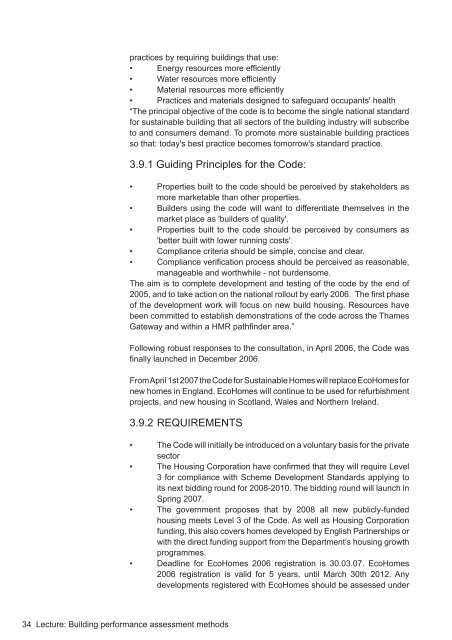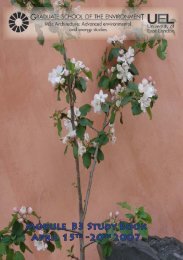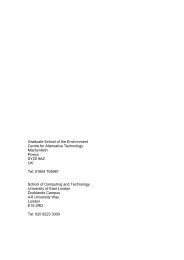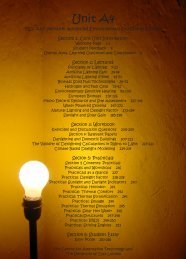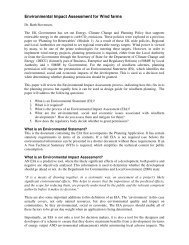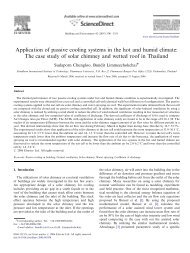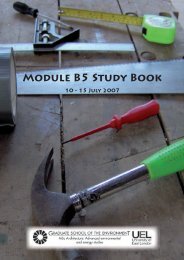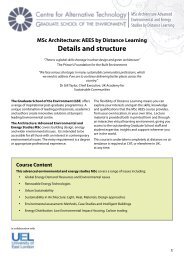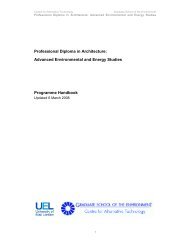Module B1 Study Book - the Graduate School of the Environment
Module B1 Study Book - the Graduate School of the Environment
Module B1 Study Book - the Graduate School of the Environment
Create successful ePaper yourself
Turn your PDF publications into a flip-book with our unique Google optimized e-Paper software.
practices by requiring buildings that use:<br />
• Energy resources more efficiently<br />
• Water resources more efficiently<br />
• Material resources more efficiently<br />
• Practices and materials designed to safeguard occupants' health<br />
“The principal objective <strong>of</strong> <strong>the</strong> code is to become <strong>the</strong> single national standard<br />
for sustainable building that all sectors <strong>of</strong> <strong>the</strong> building industry will subscribe<br />
to and consumers demand. To promote more sustainable building practices<br />
so that: today's best practice becomes tomorrow's standard practice.<br />
3.9.1 Guiding Principles for <strong>the</strong> Code:<br />
• Properties built to <strong>the</strong> code should be perceived by stakeholders as<br />
more marketable than o<strong>the</strong>r properties.<br />
• Builders using <strong>the</strong> code will want to differentiate <strong>the</strong>mselves in <strong>the</strong><br />
market place as 'builders <strong>of</strong> quality'.<br />
• Properties built to <strong>the</strong> code should be perceived by consumers as<br />
'better built with lower running costs'.<br />
• Compliance criteria should be simple, concise and clear.<br />
• Compliance verification process should be perceived as reasonable,<br />
manageable and worthwhile - not burdensome.<br />
The aim is to complete development and testing <strong>of</strong> <strong>the</strong> code by <strong>the</strong> end <strong>of</strong><br />
2005, and to take action on <strong>the</strong> national rollout by early 2006. The first phase<br />
<strong>of</strong> <strong>the</strong> development work will focus on new build housing. Resources have<br />
been committed to establish demonstrations <strong>of</strong> <strong>the</strong> code across <strong>the</strong> Thames<br />
Gateway and within a HMR pathfinder area.”<br />
Following robust responses to <strong>the</strong> consultation, in April 2006, <strong>the</strong> Code was<br />
finally launched in December 2006.<br />
From April 1st 2007 <strong>the</strong> Code for Sustainable Homes will replace EcoHomes for<br />
new homes in England. EcoHomes will continue to be used for refurbishment<br />
projects, and new housing in Scotland, Wales and Nor<strong>the</strong>rn Ireland.<br />
3.9.2 REQUIREMENTS<br />
• The Code will initially be introduced on a voluntary basis for <strong>the</strong> private<br />
sector<br />
• The Housing Corporation have confirmed that <strong>the</strong>y will require Level<br />
3 for compliance with Scheme Development Standards applying to<br />
its next bidding round for 2008-2010. The bidding round will launch in<br />
Spring 2007.<br />
• The government proposes that by 2008 all new publicly-funded<br />
housing meets Level 3 <strong>of</strong> <strong>the</strong> Code. As well as Housing Corporation<br />
funding, this also covers homes developed by English Partnerships or<br />
with <strong>the</strong> direct funding support from <strong>the</strong> Department’s housing growth<br />
programmes.<br />
• Deadline for EcoHomes 2006 registration is 30.03.07. EcoHomes<br />
2006 registration is valid for 5 years, until March 30th 2012. Any<br />
developments registered with EcoHomes should be assessed under<br />
34 Lecture: Building performance assessment methods


